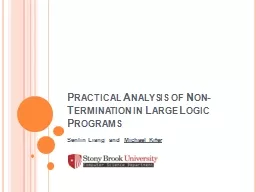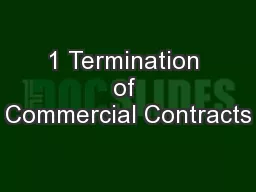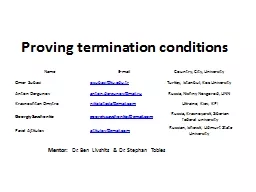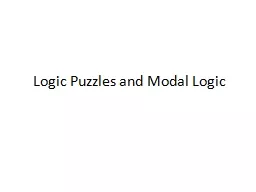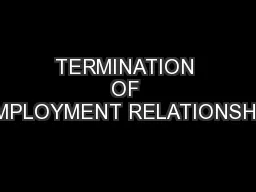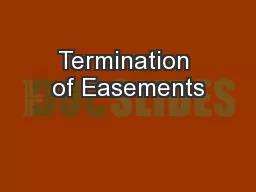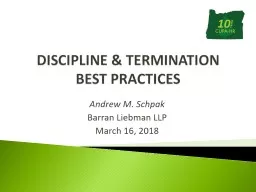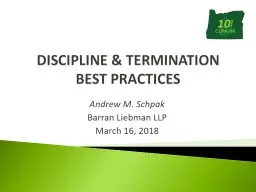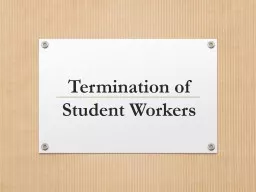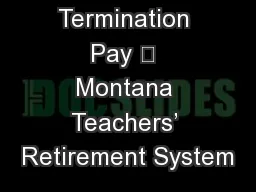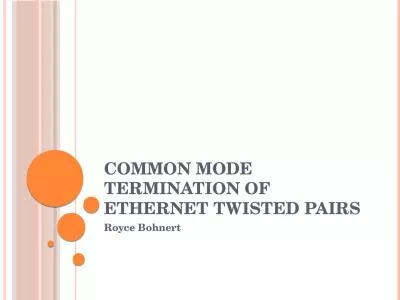PPT-Practical Analysis of Non-Termination in Large Logic Progra
Author : pasty-toler | Published Date : 2016-07-25
Senlin Liang and Michael Kifer Motivation Highlevel LP languages eg SILK http silksemwebcentralorg Flora2 http florasourceforgenet are designed to be suitable
Presentation Embed Code
Download Presentation
Download Presentation The PPT/PDF document "Practical Analysis of Non-Termination in..." is the property of its rightful owner. Permission is granted to download and print the materials on this website for personal, non-commercial use only, and to display it on your personal computer provided you do not modify the materials and that you retain all copyright notices contained in the materials. By downloading content from our website, you accept the terms of this agreement.
Practical Analysis of Non-Termination in Large Logic Progra: Transcript
Download Rules Of Document
"Practical Analysis of Non-Termination in Large Logic Progra"The content belongs to its owner. You may download and print it for personal use, without modification, and keep all copyright notices. By downloading, you agree to these terms.
Related Documents

